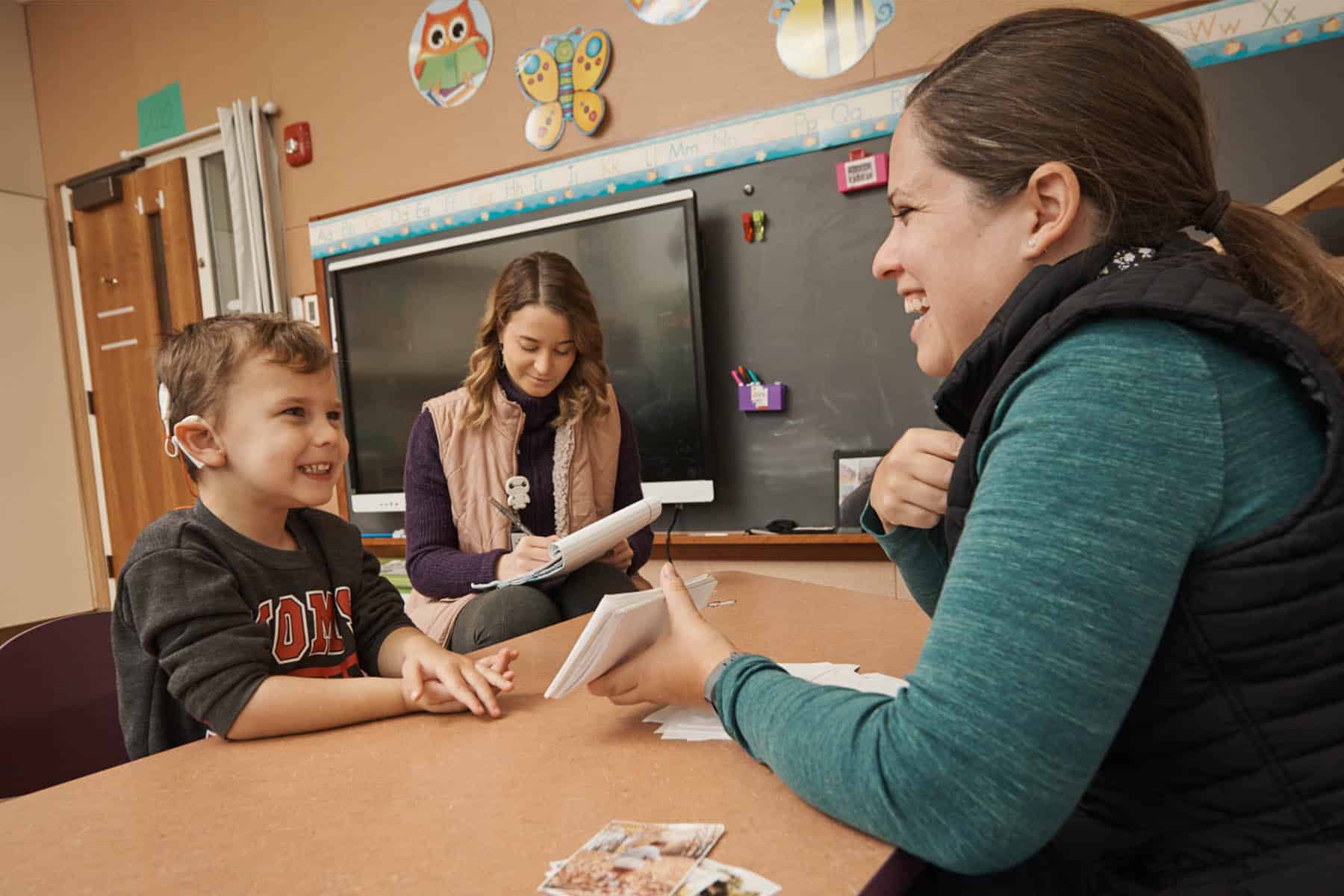The holiday season has ended, 2020 is (thankfully!) over and it is time to get back to learning. The return to school in January, whether it be in-person or virtual, is an ideal time to assess a student’s speech, language and listening skills and note any changes that may have occurred over break. To assess language skills, a formal assessment is not necessary; instead, consider the use of an informal language sample to gather information.
What is an informal language sample? An informal language sample is a tool used to track the language that a student is using during various times of the day. The professional collecting the sample writes down verbatim what the student says in order to determine present levels, update progress and set goals.
When and where can language samples be collected? In order to get the most accurate information about a student’s language skills, samples should be collected at various times of the day, such as arrival time when asking about their evening or weekend, in large group settings like free play or centers, during the morning meeting or in the hallway when transitioning between classes. Conversational tasks can also be planned to get a student talking, including:
- Using a picture book to have the student tell you a story. If the student can read, use a wordless picture book.
- Engaging the child in pretend/dramatic play or with toys (e.g., a house with toy people, a barn with animals, play food with puppets, etc.)
- Asking an older student to re-tell their favorite movie or explain how to play their favorite video game.
How long should a language sample be? Language samples can vary in length but should ideally include at least 50 utterances in order to get a representative sample of the child’s skills.
What are some helpful hints for collecting samples?
- Have paper or even a post-it note nearby if you know you are planning to take a language sample for a student, especially if you are listening to them during times outside of the classroom (e.g., at recess, during lunch, in the hallway).
- Make sure to write down verbatim what the student says. It can be easy to fill-in-the-blanks and write down what the student intended to say instead of what they actually said; however, it is essential that their actual utterance is recorded in order to get the best look at their language skills.
- Record interactions when possible. Having a recording can help to catch any utterances missed and can ensure the accuracy of those transcribed.
While collecting a robust language sample can seem tedious, it is a useful method to gather information about a student’s current language skills. Samples should be collected throughout the year but can be especially beneficial after a long break.
Click here to learn more about the CID TAGS, a rating system used to determine present language levels, set goals and track progress.

Jessica Klein is a speech-language pathologist. In addition to working at CID, she has worked in a public school setting, serving elementary-age students. Ms. Klein has co-authored several workshops, presented at a variety of professional conferences and written an online course about developing literacy skills in students who are deaf and hard of hearing. Most recently, she co-authored the SPICE for Life Second Edition auditory training curriculum.












